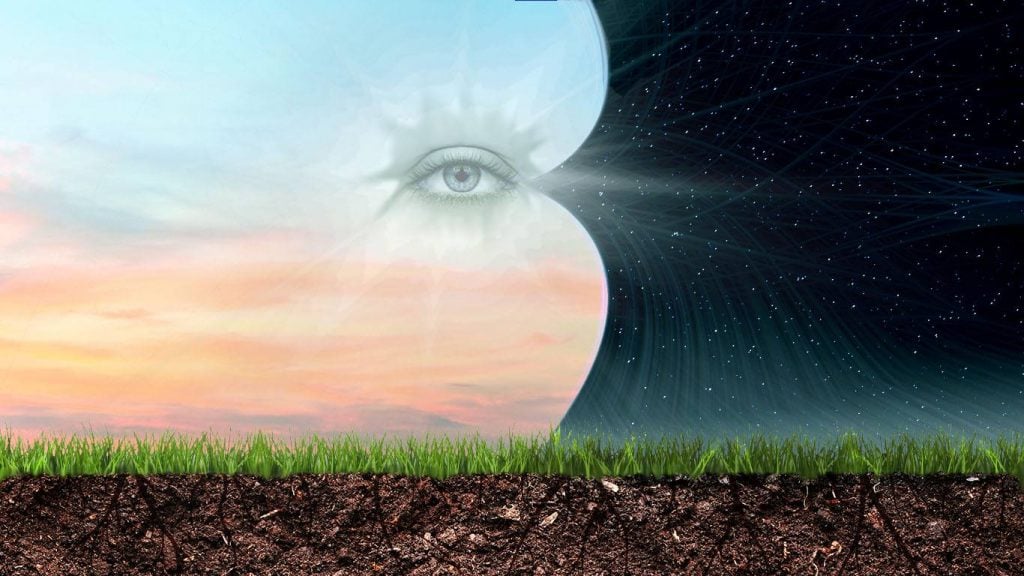Welcome to our second feature exploring the intersection of psychedelics and mainstream society.
It’s no secret that the Western world has found itself awash in an existential crisis for the ages. Rates of depression, addiction, and suicide are at all-time highs, loneliness has become an epidemic, and a sense of meaninglessness seems to have seeped into many people’s lives. Though each individual certainly has their own circumstances, the prevailing theory is that this baseline cultural malaise can be traced back to the tenets of our 21st century lives: with the rise of social media, urban lifestyles, individualism, and instant gratification, we’ve lost our connection to community, family, and the natural world—and thus ourselves.
The key word here is, of course, connection. In our fast-paced, tech-driven lives, we’ve become utterly disconnected, a semi-amorphous state that can leave us feeling anxious, alone, depressed, and out of place—as if the world is happening without us. Connection, on the other hand, can be thought of as a feeling of ‘oneness’. As writer Brianna Wiest put it in Forge: “It’s having shared experiences, relatable feelings, or similar ideas. It is the feeling of belonging to something greater than oneself.”
While this may sound like a concept pioneered by a woo-woo psychologist, research is increasingly showing that a feeling of connection—to other people, nature, and perhaps even a higher power—is integral to our well-being. And as research around the efficacy of psychedelics expands, it’s possible microdosing could serve as the missing link to pull us all together.
From “Fight or Flight” to “Rest and Digest”
To understand how we get back to a sense of connection (and how psychedelics may help), we first need to understand a bit about the two parts of the autonomic nervous system responsible for our moods: the sympathetic and the parasympathetic nervous systems.
The sympathetic nervous system is what prepares the body for the “fight or flight” response in the face of any potential danger. It’s a fearful, closed-off state that leaves you in high stress. And while it’s supposed to only kick in when you need that burst of energy to high-tail it out of danger’s way, humans are increasingly finding themselves stuck in the fight-or-flight mode—which can cause lasting damage.
“It’s really bad for your body,” says Dr. Julie Holland, a psychiatrist specializing in psychopharmacology and author of the recent book Good Chemistry: The Science of Connection From Soul to Psychedelics. “It’s bad for your immune system; your body can’t repair itself when it’s in fight-or-flight.”

The main chemicals that fuel the sympathetic nervous system are adrenaline and cortisol. When these chemicals constantly flood the brain, your heart rate increases, blood pressure elevates, sugar in the bloodstream rises, and your brain uses more glucose. These chemicals also alter immune system responses and suppress the digestive system, the reproductive system, and growth processes.
More than all that, this complex system also communicates with the brain regions that control mood, motivation, and fear. In other words, the overactivation of the sympathetic nervous system can cause depression, anxiety, cognitive impairment, and—yes—a loss of sense of connection.
The parasympathetic nervous system is the opposite of this—where sympathetic is known as “fight or flight,” para is known as “rest and digest” or “feed and breed”. It brings the body to a state of calm and is “the space where you intend and befriend or connect and protect,” as Holland puts it.
“It’s where the body repairs itself,” she says. “It’s when you can sleep. It’s when you have sex. The parasympathetic state is what’s better for your body. And that is an open state where you are open to learning, you are open to sharing, you’re open to communicating and connecting.”
The chemical that fuels the parasympathetic nervous system is oxytocin, otherwise known as the hormone of trust and bonding. According to Holland, common examples of high oxytocin states are orgasm, nursing, childbirth, hugging, pats on the back, good handshakes, and eye contact.
“We’re social primates, and we are really hardwired and designed to connect and to cooperate,” she says. “Oxytocin is sort of the lubrication for all this social bonding behavior that happens.”
The big problem in our modern lives is that most of us are running on the sympathetic nervous system. To heal a lot of our psychic wounds, however, we need to get to the parasympathetic state.

What’s ‘God’ Got to Do With it?
Dr. Holland will be the first to admit that there are many ways to put the parasympathetic nervous system back in control, including meditation, community involvement, getting out into nature, and more. But another way, of course, is psychedelics.
Psychedelics are known for fostering a sense of oneness and connection—to the self, others, the universe, and nature. One way to explain this is that psychedelics increase levels of oxytocin in the brain, either directly or indirectly. MDMA, for example, directly increases oxytocin levels in the brain, while others, such as LSD or psilocybin, do so indirectly by enabling cross-talk between the serotonin and oxytocin receptors, thus releasing that flood of chemical oneness.
But it’s not just the activation of these chemicals and receptors that cause us to come away from a trip feeling more connected to our surroundings. It’s what happens in the psychedelic state induced by these chemical reactions.
“People who have a positive experience with psychedelics, at the peak of that positive experience is a sense of oneness and this sense that everything is connected,” Holland says. “For some of us, we come away from that place, and we remember that lesson.”
Though we don’t know exactly why, high doses of some psychedelics—such as psilocybin, LSD, and ayahuasca—are known to occasion a “mystical-type experience”, or an encounter with/connection to either God, a divine entity, a higher power, the universe, or whatever else may feel spiritually meaningful to the person experiencing it. More than that, research is continually showing that those who experience a mystical encounter are more likely to see long-term benefits to their psychological health—including a lasting sense of connection to something greater than themselves.
A 2019 survey conducted by researchers at the Johns Hopkins University School of Medicine, for example, found that people who had a mystical experience while under the influence of LSD, psilocybin, ayahuasca, or DMT reported positive changes (such as life satisfaction and increased purpose and meaning) that lasted even decades later.
Another study from 2018 that examined the efficacy of psilocybin to treat addiction, depression, and anxiety found that participants who reported having a mystical experience saw lasting improvements in life satisfaction, social relationships, spiritual awareness, and attitudes about life, self, mood, and behavior. The study administered three dose tiers, and those who were given the highest dose showed the most positive changes, including feelings of interpersonal closeness, gratitude, life meaning/purpose, and community.
“Although modern Western medicine doesn’t typically consider ‘spiritual’ or ‘religious’ experiences as one of the tools in the arsenal against sickness,” the study’s lead researcher, Roland Griffiths, said in a press release, “our findings suggest that these encounters often lead to improvements in mental health.”
Indeed, yet another 2019 study found that people who feel a sense of “oneness” or a connection to “a divine principle, life, the world, other persons, or even activities” are more likely to report higher levels of happiness than those who don’t—with or without the use of psychedelics.
Psychedelics have also been shown to increase our connection to something a little more tangible but still in the realm of mysticism: nature. A 2017 study, for example, found that people who had past experiences with psychedelics were more likely to report feeling connected to nature rather than apart from it. Another study released this year confirmed those findings.
The Existential Antidote
So what does all of this have to do with microdosing? While the practice of consistently taking small doses of psychedelics has been studied far less than the impact of “full” doses, there is reason to believe that, even without “seeing God”, psychedelics can boost a sense of connection—even if by simply reducing the catalysts of disconnection, such as depression and anxiety.
A microdosing study from the University of Bergen, for instance, found that the 21 male respondents reported improved mood, cognition, and creativity, and that these effects relieved symptoms of anxiety and depression. Another study from the Dutch Psychedelic Society found that microdosing psilocybin truffles could potentially enhance creativity, and yet another found that microdosing increased reported psychological functioning and decreased reported levels of depression and stress. A 2020 survey also found that 44% of respondents reported that their mental health was “much better” as a consequence of microdosing.
While none of these studies directly found that microdosing can create a greater sense of connection, that could be by way of omission—if participants aren’t asked if they now feel at one with the universe, then we can’t know if they do or don’t. But as research into this burgeoning practice grows, and more anecdotal evidence piles up, we may just find that microdosing could be the antidote to our cultural malaise that we’ve been waiting for.
Interested in further exploring the intersection of psychedelics and mainstream society? Check out our first feature in this series, A Sub-Perceptual Promise: Can Microdosing Solve Mainstream Problems?







